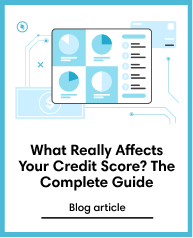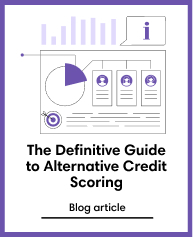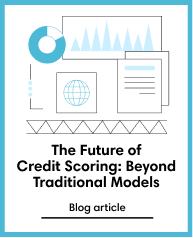Credit Scoring
Jan 5, 2022
How lenders are using alternative scoring
Subscribe to our newsletter
The economic impact of the COVID-19 pandemic has further shown lending companies that it is time to go out with the old and in with the new. Traditional credit data still largely excludes credit invisibles, underserved individuals, and new borrowers—all of whom need access to financial products now more than ever. Moreover, since traditional credit data is difficult to extract, financial institutions have historically struggled to extend credit data to the unbanked.
Thus, most lenders have turned to alternative data to achieve three main goals: improve their credit risk management practices, better assess borrowers, and accommodate individuals who have long been excluded from the formal financial system. Alternative data allows lenders to check various data points—such as insurance payments, rental and utility payments, phone bills, public records, and more—to prove the financial reliability of borrowers.
According to Mike Mondelli, Senior Vice President of TransUnion Alternative Data Services, alternative data sources accurately score more than 90% of applicants who traditional lenders would otherwise recognise as thin-files or credit invisibles. This proves that alternative data is a viable solution to developing or improving credit scoring methods and serving unbanked and underserved individuals and businesses.
Replacing traditional scoring methods
Artificial intelligence and machine learning have made it possible for lenders to automate their processes and adopt fintech credit scoring methods to better serve customers. Machine learning, for instance, has stronger predictive power for fintech credit scoring because it can check micro segmentations from thousands of data segments and identify micro patterns in real-time.
When a lender extracts the telecommunications data of an applicant, machine learning can detect their raw call detail records and translate those into behavioural patterns that may be related to risk. Using telecommunications data and machine learning in this way can help banks gain better insights on credit or loan applicants and improve their credit risk management in the long run. Additionally, alternative data and machine learning can lead to automated decisions, which can minimise application processing time by 80%, and improved credit approval rates, which can increase the sales of banks by 15%.
Alternative data has proven effective in scoring unbanked and underserved individuals, so much so that credit bureaux have also ventured into this space themselves. TransUnion, for instance, acquired alternative credit bureaux L2C and FactorTrust back in 2014 and 2017, respectively, as a way of providing lenders with a more comprehensive view of consumers’ financial obligations and payment performance. The acquisition further enhances TransUnion’s role as a credit reporting company, which supports both financial institutions and customers in more than 30 countries around the world.
Experian also partnered with financial data aggregator Finicity to give lenders in over 100 countries real-time access to information on a customer’s assets, income, and ability to pay. With alternative data, Experian and Finicity help reduce the underwriting process from 70 days to 10 days.
The power of credit scoring technologies
Aside from credit bureaux, several fintech companies all over the world have also been helping lenders adopt alternative credit scoring methods. One such fintech company is credolab. With its embedded scoring technology, credolab helps lenders automate their existing credit scoring models to generate advanced, predictive, and accurate scores for their customers.
Credolab also takes fintech credit scoring to the next level with its Credometer tool, which is designed to assess the accuracy and performance of lenders’ scoring processes. In this way, lenders can gauge how effective their current scoring methodology is and how they can improve it.
Lenders are seeing a slow uptick in credit and loan applications once again as the world gradually recovers from the effects of the pandemic. Alternative credit scoring methods have thus become more essential than ever, especially for borrowers who have not been able to improve their credit score over the past two years but at least fulfil their regular financial obligations. Moreover, alternative credit scoring models have allowed lenders to brighten the future of financial inclusion.
To learn more about the efficacy of credolab’s alternative credit scoring solution, check out the ebook here.





